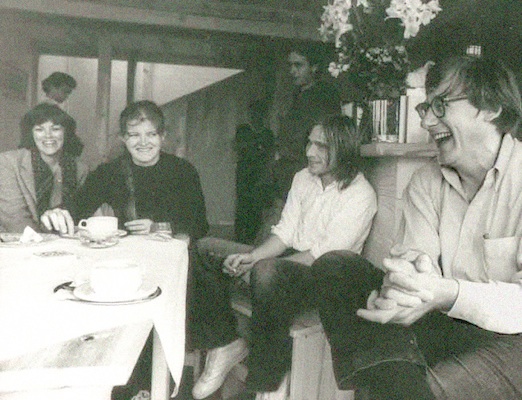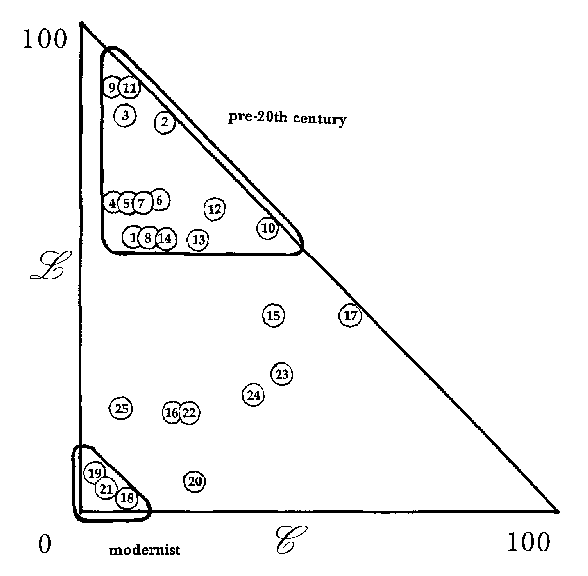Dear readers!
This post will be finished during the next days/weeks.
I've tried to establish some other blogs, but I see Permaliv is by far most popular. So I've decided, in respect of my readers, to upgrade this blog and start posting regularly on it again. But probably I'll not have time for this before next winter. I've therefore decided to set up a summer post to give something to think about for summertime.
As I write this in morning I've already had more than 100 visitors. I do now regularly have between 200-500 visitors a day. Some days I've surpassed 1000 hits. This is amazing for such a counter-popular blog!
I'm happy to see the international slant among my readers, I do now have a high score among countries such as Russia, Ukraine, Germany, China and India. Just the last month I had almost 3000 hits from India. One day I had more than 1000 hits from China alone.
I will use this blog to make a world of wholeness, and to end the realm of capitalism, changing to an in-group economy and democracy. Most of all, we need to end the 400 years of imprisoning under a Cartesian world view, entering a post-Cartesian world, or to be more correct, an Alexandrian world view. In the future Christopher Alexander will be regarded as far greater than Descartes. But to make this shift happen I need the help from my readers all over the world!
The mechanistic idea of order can be traced to Descartes, around 1640. His idea was: if you want to know how something works, you can find it out by pretending that it is a machine. You completely isolate the thing you are interested in – the rolling of a ball, the falling of an apple, the flowing of the blood in the human body – from everything else, and you invent a mechanical model, a mental toy, which obeys certain rules, and which will then replicate the behavior of the thing. It was because of this kind of Cartesian thought that one was able to find out how things work in a modern sense.
However, the crucial thing which Descartes understood very well, but which we most often forget, is that this process is only a method. This business of isolating things, breaking them into fragments, and of making machinelike pictures (or models) of how things work, is not how reality actually is. It is a convenient mental exercise, something we do to reality, in order to understand it.
Descartes himself clearly understood his procedure as a mental trick. He was a religious person who would have been terrified to find out that people in the 20th century began to think that reality itself is actually like this. But in the years since Descartes lived, as his idea gathered momentum, and people found out that you really could find out how the bloodstream works, or how the stars are born, by seeing them as machines – and after people had used the idea to find out almost everything mechanical about the world from the 17th century to the 20th century, people shifted into a new mental state that began treating reality as if this mechanical picture really were the nature of things, as if everything really were a machine.
For the purpose of discussion, in what follows, I shall refer to this as the 20th century mechanistic viewpoint. The appearance of this 20th century mechanistic view had tremendous consequences, both devastating for artists. The first was that the “I” went out of world picture. The picture of the world as a machine doesn’t have an “I” in it. The “I”, what it means to be a person, the inner experience of being a person, just isn’t part of this picture. Of course it is still there in our experience. But it isn’t part of the picture we have of how things are. So what happens? How can you make something which have no “I” in it, when the whole process of making anything comes from the “I”? The process of trying to be an artist in a world which has no sensible notion of “I” and no natural way that the personal inner life can be part of the picture of things – leaves the art of building as a vacuum. You just cannot make sense of it.
The second devastating thing that happened with the onset of the 20th century mechanistic world-picture was that clear understanding of value went out of the world. The picture of the world we have from physics, because it is built only out of mental machines, no longer has any definite feeling of value in it: value has become sidelined as a matter of opinion, not intrinsic to the nature of the world at all.
And with these two developments, the idea of order fell apart. The mechanistic idea tells us very little about the deep order we feel intuitively to be in the world. Yet it is this deep order which is our main concern. – The Phenomenon of Life, by Christopher Alexander, page 16
 |
| Christopher Alexander to the right |
Reducing wholes to parts lies at the core of the scientific worldview we inherited from Galileo, Bacon, Descartes, and their modern acolytes in the sciences of economics, efficiency, and management. - David OrrI've now taken up again reading the book A Theory of Architecture, and has learned a brilliant definition of life:
Life = Harmony X Temperature
Although Salingaros uses this definition on architecture, I think it can be used on all aspects of life. Salingaros also says this is the definition of what Christopher Alexander calls LIFE.
So I was thinking that what is a state of permanent life = perma-life or PERMALIV. To achieve a state of permanent life we need permaculture or a permanent culture. All of which is the intention of this blog.
All of this has made me rethink the ambitions for this blog, and I look forward to upgrade it. Especially I need a new banner on the top of it. If any of my readers can help me making a unique banner I should be grateful.
I'll try to make a photocopy of Salingaros brilliant definition of LIFE later.
- Life and Complexity in Architecture From a Thermodynamic Analogy
One sub-chapter follows:
This situation is a result of the cartesian world-view, where you see your fellow people as machines, not as biological and spiritual creatures with an inert drive toward biophilia.
To learn more about this subject, to understand the difference between treating your friends or neighbors as mechanical, biological or spiritual human beings, please read the following article by Salingaros and madsen:
- Neuroscience, the Natural Environment, and Building Design
See also:
- TOWARDS A BIOLOGICAL UNDERSTANDING OF ARCHITECTURE AND URBANISM:
LESSONS FROM STEVEN PINKER
Life and Complexity in Architecture From a Thermodynamic Analogy
I'm happy to learn that the chapter I referred to above is downloadable from Internet, I have even republished it at the P2P-blog, this will be published soon. Meanwhile, here's the original text (there might be some upgrades in the book):- Life and Complexity in Architecture From a Thermodynamic Analogy
One sub-chapter follows:
The Universal Drive to Raise the Architectural Life
Figure 1 shows that man worked very hard to raise the architectural life of his surroundings, up until the 20th century. People with entirely distinct conceptions of beauty, using very different materials, and driven by similar motivations, managed to build structures that cluster together in the top corner of Figure 1. These buildings do not resemble each other in form. Furthermore, our choice of buildings is only a representative sample: hundreds of buildings from before the 20th century lie in the top corner of Figure 1.My own sad experience is that people today have become so individualized that they don't recognise and appreciate the need of their fellow human beings to create LIFE in their surroundings, far less the obligation the architect, bureaucrat and developer has to lay the foundation for the creation of LIFE, to make LIFE flood in peoples neighborhoods and lives.
Like animals with the instinct for complicated courtship and nest-building, we have an instinct to build things that embody certain qualities. For thousands of years, structures were built that do not meet any obvious utilitarian need; and yet they occupy a central role in cultures, requiring vast commitments in manpower and time. A simple shelter does not require the incredible sophistication that people have invested in buildings. Throughout history, buildings have reflected mankind’s drive to transcend materials and produce something to which we can relate directly on a deep emotional level.
What about houses and ordinary buildings? This model applies to all structures, and not just to important historical buildings. Vernacular architecture has reflected the values of L and C of “official” buildings throughout history. For instance, classical Greek and Roman houses were sufficiently detailed and coherent to give high values for L similar to those of contemporary temples, despite having an entirely different form. Although houses and commercial buildings in our time are strongly influenced by architectural fashion to have low L , their inhabitants instinctively raise L by decorating interior surfaces. - Nikos A. Salingaros
This situation is a result of the cartesian world-view, where you see your fellow people as machines, not as biological and spiritual creatures with an inert drive toward biophilia.
To learn more about this subject, to understand the difference between treating your friends or neighbors as mechanical, biological or spiritual human beings, please read the following article by Salingaros and madsen:
- Neuroscience, the Natural Environment, and Building Design
See also:
- TOWARDS A BIOLOGICAL UNDERSTANDING OF ARCHITECTURE AND URBANISM:
LESSONS FROM STEVEN PINKER


